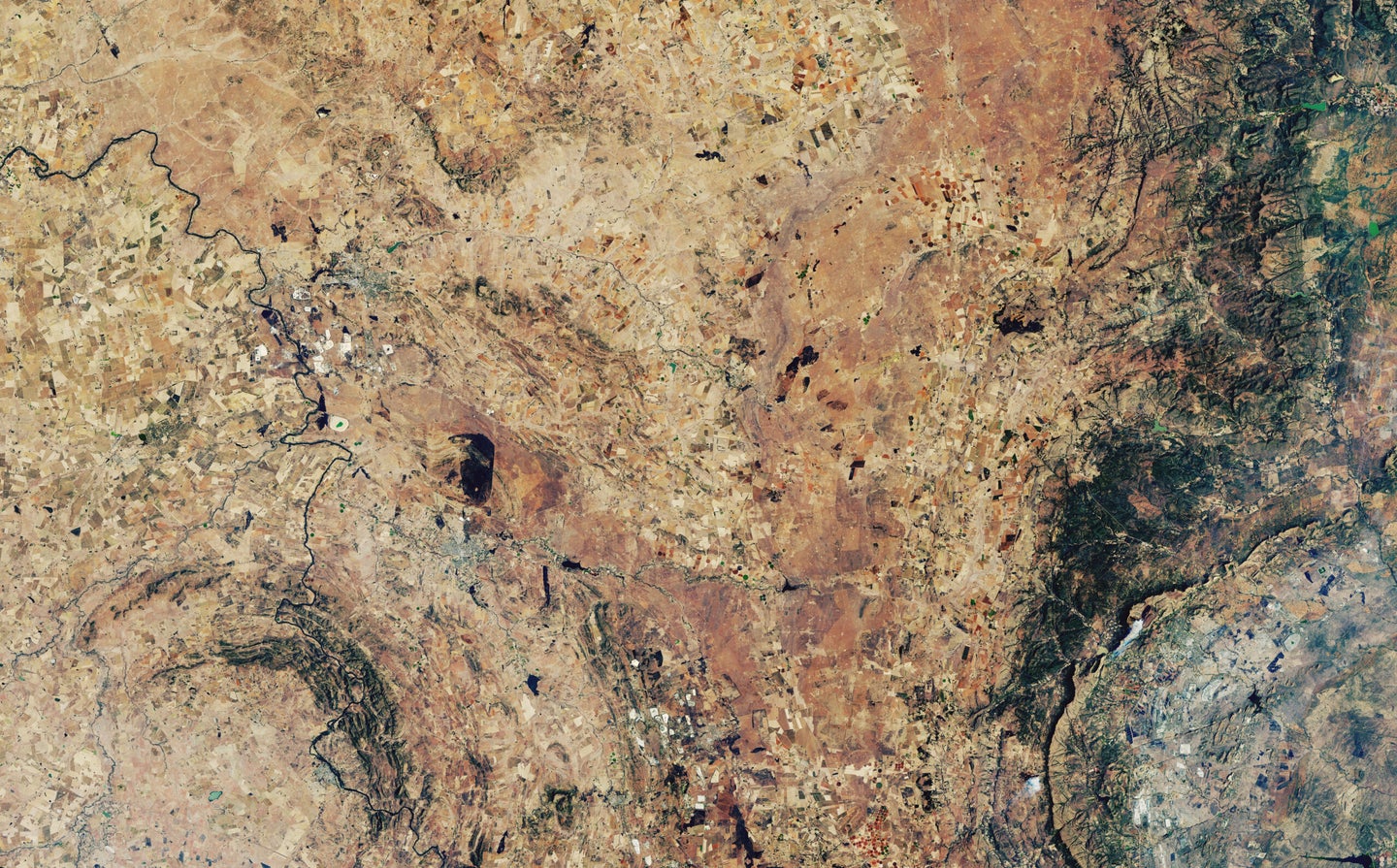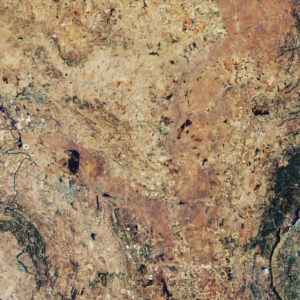It was possibly twice the size of the asteroid that wiped out the dinosaurs.
Two billion years ago, an impactor (most likely an asteroid) crashed into the Earth near present-day Johannesburg, South Africa, forming the largest and oldest known crater on Earth. NASA Earth Observatory image by Lauren Dauphin, using Landsat data from the U.S. Geological Survey.

It’s a big week for asteroids, and not just because NASA’s DART mission intentionally slammed a spacecraft into an asteroid. An ancient space rock is getting another chance in the spotlight as well.
At roughly 62 miles (100 kilometers) in diameter, the Vredefort crater, located near the present-day city of Johannesburg, South Africa, is the largest and oldest-known impact crater on the planet. About 2 billion years ago, an impactor (most likely an asteroid) hurtled towards the Earth, forming the giant hole in the ground that was an estimated 111 to 186 miles wide (180 to 300 kilometers) soon after impact. A study published this week in the Journal of Geophysical Research found that the impactor may have been bigger than previously estimated. If so, this flying rock would have had devastating consequences across the entire planet.
This new research will allow scientists to better simulate impact events on Earth and other planets. “Understanding the largest impact structure that we have on Earth is critical,” Natalie Allen, the paper’s first author and a PhD student at Johns Hopkins University, said in a press release. “Having access to the information provided by a structure like the Vredefort crater is a great opportunity to test our model and our understanding of the geologic evidence so we can better understand impacts on Earth and beyond.”
The Vredefort crater has eroded over the past 2 billion years, which makes it difficult for scientists to accurately estimate both how large the crater was upon impact, not to mention the size and velocity of the impactor that made the crater. The team conducted simulations to match the updated size of the crater. Their results showed that an impactor would have to be much larger: about 12 to 15 miles in diameter (20 to 25 kilometers) and traveling at a velocity of about 33,500 to 44,000 miles per hour (15 to 20 kilometers per second).
These new findings show it is possible that it was larger than the asteroid that struck 66 million years ago, causing the extinction of most species of dinosaurs and forming the Chicxulub crater in Mexico. In addition to this mass extinction, Earth was plagued by major effects after the hit, including widespread forest fires, acid rain, and destruction of the ozone layer.
If the Vredefort crater was created by an even larger and faster moving impactor than the one that formed the Chicxulub crater, the Vredefort impact possibly caused even greater catastrophic global consequences.
“Unlike the Chicxulub impact, the Vredefort impact did not leave a record of mass extinction or forest fires given that there were only single-cell lifeforms and no trees existed two billion years ago,” Miki Nakajima, an assistant professor of earth and environmental sciences at the University of Rochester, said in a press release. “However, the impact would have affected the global climate potentially more extensively than the Chicxulub impact did.”
Nakajima added that it’s possible that dust and small particles from the Vredefort impact spread across the planet blocking sunlight, cooling the Earth’s surface. “This could have had a devastating effect on photosynthetic organisms,” he said. “After the dust and aerosols settled—which could have taken anywhere from hours to a decade—greenhouse gases such as carbon dioxide that were emitted from the impact would have raised the global temperature potentially by several degrees for a long period of time.”
Previous research into this event determined that material from the impactor was ejected as far away as present-day Karelia, Russia. Using a new model, the team determined that the distance of the land mass containing Karelia would have been only about 1,200 to 1,500 miles (2,000 to 2,500 kilometers) from the crater in South Africa—much closer than the roughly 6,176 miles (9.940 kilometers) that separate the two areas are today.
“It is incredibly difficult to constrain the location of landmasses long ago,” Allen said. “The current best simulations have mapped back about a billion years, and uncertainties grow larger the further back you go. Clarifying evidence such as this ejecta [material thrown out by the asteroid] layer mapping may allow researchers to test their models and help complete the view into the past.”
